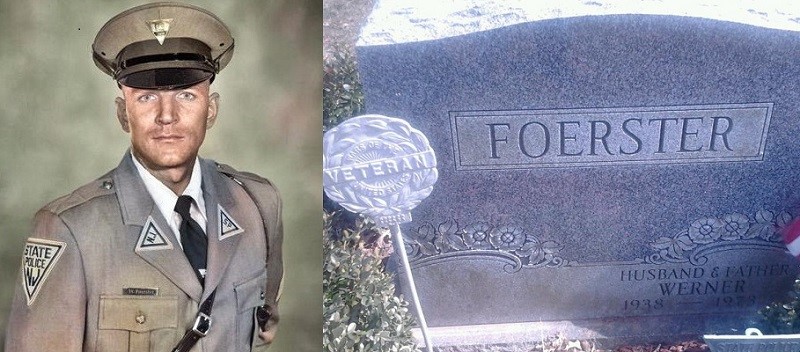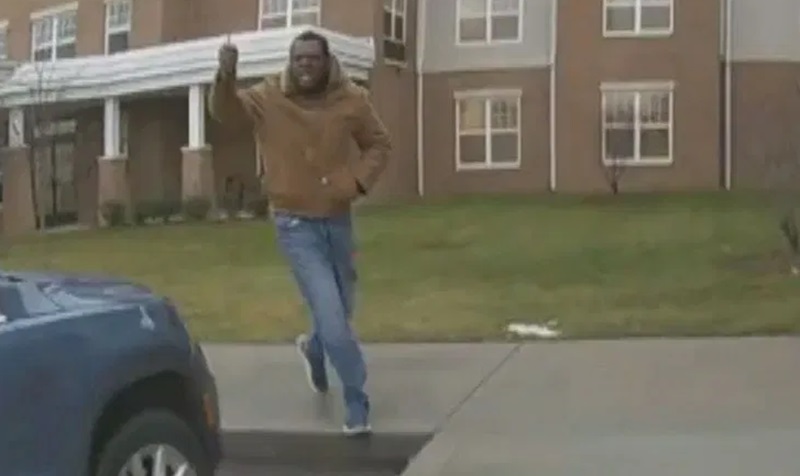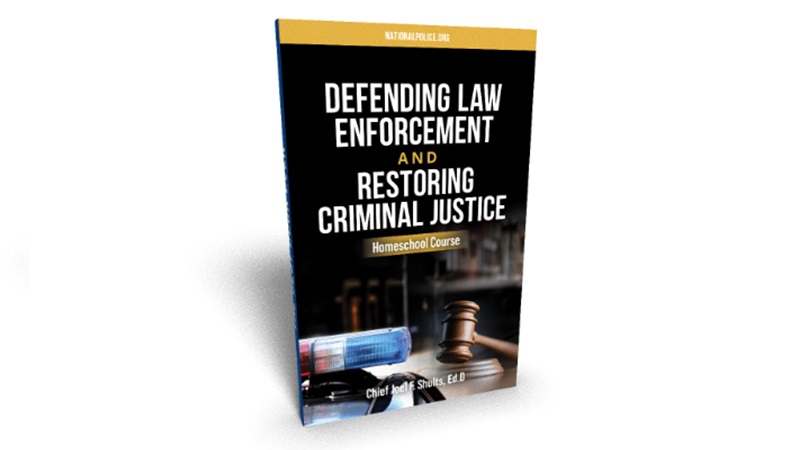
With most people aspiring to an imperative role in law enforcement, there are many ways to serve and steward justice principles. Some in policing have a knack for meticulous examinations of instruments, textures, fluids, fibers, and a bevy of other matters under the scope of forensic scientists whose bio-backgrounds help capture criminals via macro-level studies that galvanize cops’ cases and unequivocally make up the minds of judges and jurors…leading to criminal convictions.
Annually, Forensic Science Week highlights the remarkable contributions of typically lab-coated professionals employed in the public safety sector. These professionals often solidify criminal cases with microscopic specks of material that tie an offender to a caper that was conventionally tough to crack.
“National Forensic Science Week (September 15-21, 2024) recognizes the contribution that forensic science makes to the criminal justice system. It is an opportunity to celebrate academic programs, forensic professionals, and scientific research in the various forensic disciplines,” the Forensic Technology Center of Excellence (FTCOE) indicated.
Suppose you have ever watched episodes of the Forensic Files series. In that case, you’ve seen the irrefutable investigatory findings of scientific-oriented staff aiding law enforcement officers and detectives building cases against some cunning criminal minds.
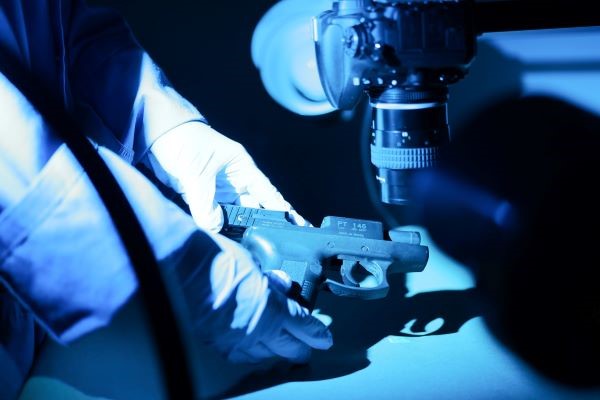
(Photo courtesy of the St. John’s County Sheriff’s Office.)
A spokesperson with the Pinellas County Sheriff’s Office in Tampa Bay, Florida, said: “National Forensic Science Week encourages us to recognize the important role that proper forensic science plays in the investigation of crime throughout the nation. At PCSO we are proudly accredited by [the] ANSI National Accreditation Board for our forensic disciplines of crime scene investigations and friction ridge detail.”
Most forensic science personnel in police agencies will not be seen wearing a firearm since they are classified as civilian support staff. Exceptionally, the NYPD and Dallas PD are unique examples in that their Crime Scene Unit (CSI) comprises sworn officers dually certified in forensic science and evidence collection.
Police department forensic science units consist of individuals who harness a special prowess in sifting through the aftermath of crime scenes, culling clues and hard evidence that often make the most ferocious defense attorneys stoop their shoulders and preserve arguments and tactics for others on the stand.
This year the FTCOE and the Advancing Service-oriented Policing through Inclusion, Relationship-building, & Engagement (ASPIRE) team collaborated to create a short video campaign highlighting alternative career paths for law enforcement professionals as sworn forensic scientists.
Akin to the sworn hierarchy and various specialties aspired to by sworn cops (SWAT, Dive Team, Aviation, etc.), folks in forensic sciences can opt to specialize in any among a bevy of choices spanning anthropology to zoology (wildlife forensics).
Given my department was more modest-sized and not a metropolis police agency like the NYPD, our command staff elected to approve individual detectives with investigative interests in a particular forensic subspecialty such as serology or arson.
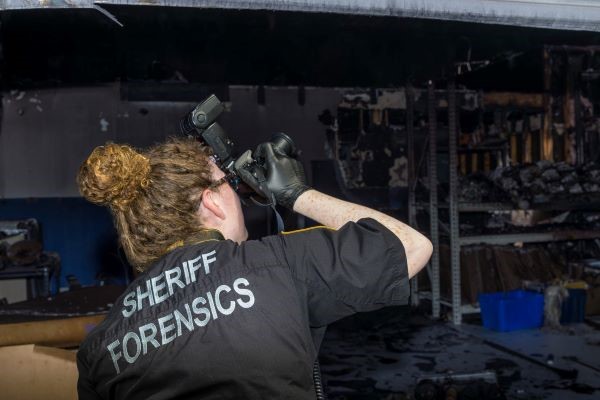
(Photo courtesy of the Pinellas County Sheriff’s Office.)
One of our detectives became so proficient with blood spatter interpretations that neighboring agencies tapped our guy’s expertise when they had crime scenes with the red stuff all over the place. Via mutual aid agreements, he was loaned out and helped them reconstruct the sequence of actions based on blood patterns in the crime scene they were investigating.
Similarly, I somehow found an interest in casting molds of footprints found in my crime scene investigations as a patrol officer. As a fan of Forensic Files, I marveled at how footwear sole patterns and textures could help place a suspect at the scene and be legally used as evidence to solidify a criminal case tried in court.
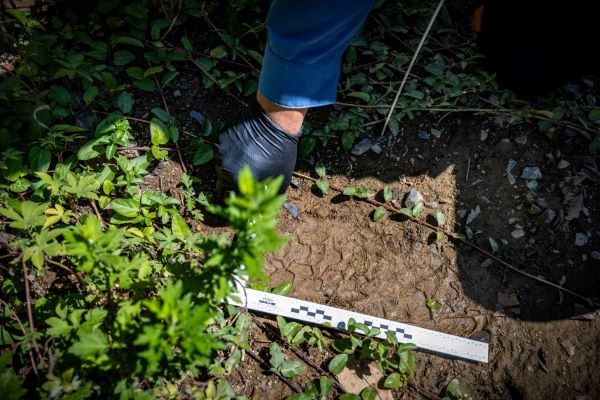
(Photo courtesy of the Morris County Sheriff’s Office.)
Police academies touch upon forensic sciences in law enforcement but do not necessarily delve too deeply into the aspect. Generally, the academy instructors take a glimpse at the subject matter in compliance with the respective state’s Criminal Justice Standards and Training Commission (CJSTC) or Police Officer Standards and Training (POST) bodies that govern/mandate the curriculum for LEOs in America.
Since forensic scientists are largely civilians who apply to vacancies posted in police bulletins and are thoroughly vetted before being hired as non-sworn personnel, CSIs collaborate with cops, teaching them the fundamentals of forensics in real-time (in crime scenes) as well as offering tidbits while sitting in on roll call.
Civilian staff working in any capacity in a law enforcement organization endure the entire rigors of the lengthy hiring process just as sworn aspirants do, symbolizing solidarity among sworn and non-commissioned crimefighters.
Crime scene investigators (CSIs) often snicker at the swift pace of collecting fragile evidence, identifying suspects, and solving crimes, as portrayed by Hollywood glam features jam-packed with entertainment.
If only it was that easy…and expedient.
That is why I favored documentary crime series such as “Forensic Files”: breaking it down, sometimes elapsing several months or years after the commission of the crime, closing cases after a fur fiber collected at the scene is correlated to a suspect’s dog or gerbil, or a paint chip dislodged from a suspect’s boot matches those at the crime scene.
As a spokesperson for the Florida Department of Law Enforcement (FDLE) declared, “One would be surprised at how much evidence can be found in something no larger than a grain of sand,” adding how CSIs “are trained to examine small to microscopic items of evidence, and identify cut, broken, or torn objects to determine if they were at one time part of the same object.” Details, details, details…hunting the devil while donning a lab coat.
Throughout my police career, I preferred processing my crime scenes when it was conventional. I summoned forensic science professionals (ours and those with the FDLE-Tampa region) when I knew it was way over my head, which was often. Speaking of being way out of my league…
The CSIs at the Miami-Dade Police Department (the home-base setting of the hit TV series “CSI: Miami”) in South Florida posted some footage depicting a walk-through of their crime lab (a unit called the Analytical Section), offering an exposé of their scientific instrumentation enabling forensic folks to help close cases and convict criminals. Fascinating stuff!
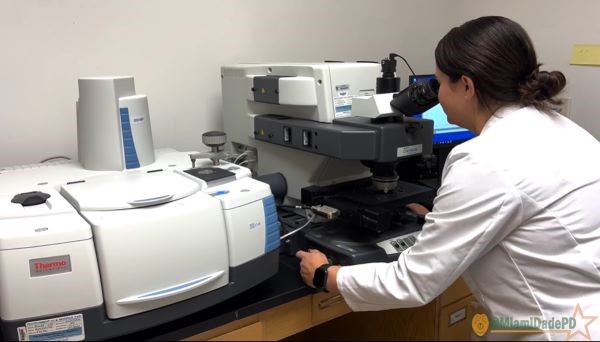
(Photo courtesy of the Miami Dade Police Department.)
Also fascinating is the latest technology being employed by forensic scientists in policing…
The Pinellas County Sheriff’s Office uses an instrument known as FARO, which “essentially recreates a crime scene you can visit and walk through. This allows detectives, attorneys, and even juries the opportunity to revisit the crime scene and all the evidence exactly as it was,” a far cry from the calculus on paper that was the method from yesteryear.
Following is a Pinellas County CSI providing us with a brief glimpse of FARO:
Given the unique instrumentation and the hefty cost to acquire it all for forensic purposes, and the nation’s majority of law enforcement agencies being “small” departments with always-constrained operating budgets, scientific analysis is ordinarily provided by the nearest metropolitan police entity or the state police crime lab (ie. the Florida Department of Law Enforcement’s Trace Materials analysts). This is another definition of mutual aid agreements.
As our friends at the Riverside Police Department aptly touted about forensic specialists, “Their dedication is vital in reconstructing crime scenes, preserving crucial evidence, and providing valuable leads to our officers and detectives,” ultimately helping with the heavy door and proverbial closure of traumatic experiences.
Hence, the professionals working “behind the scenes” sew up loose ends and help solve cases.
On that note, hats off to scientific-minded experts in policing who record, collect, analyze, connect the dots, and home in on fine details where the devil is found…culminating in criminal convictions.
Make a difference. Support the NPA.



